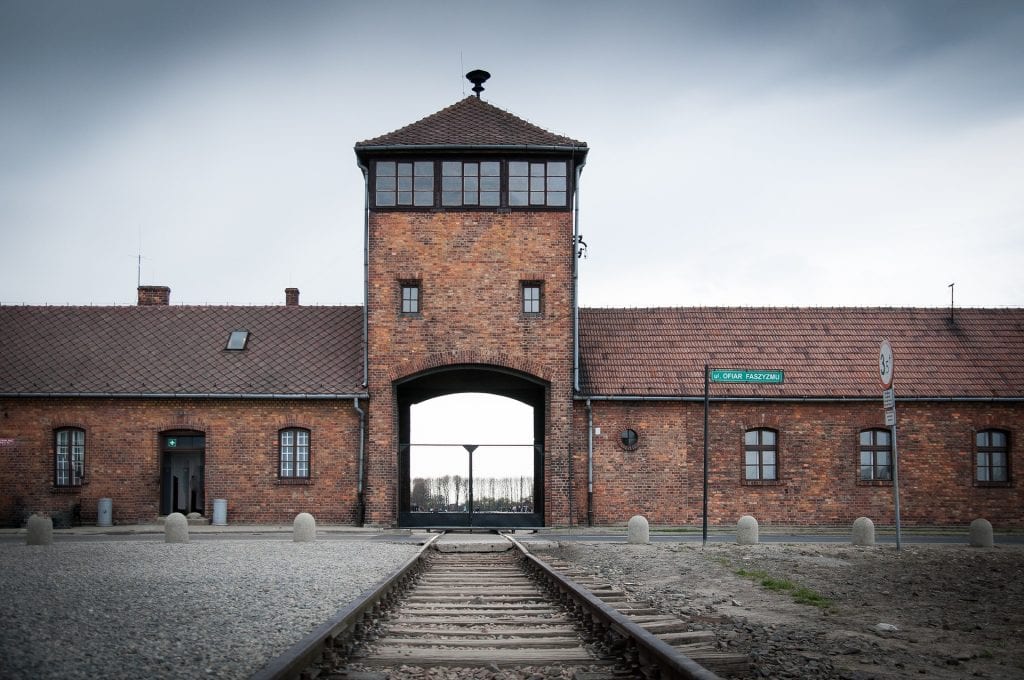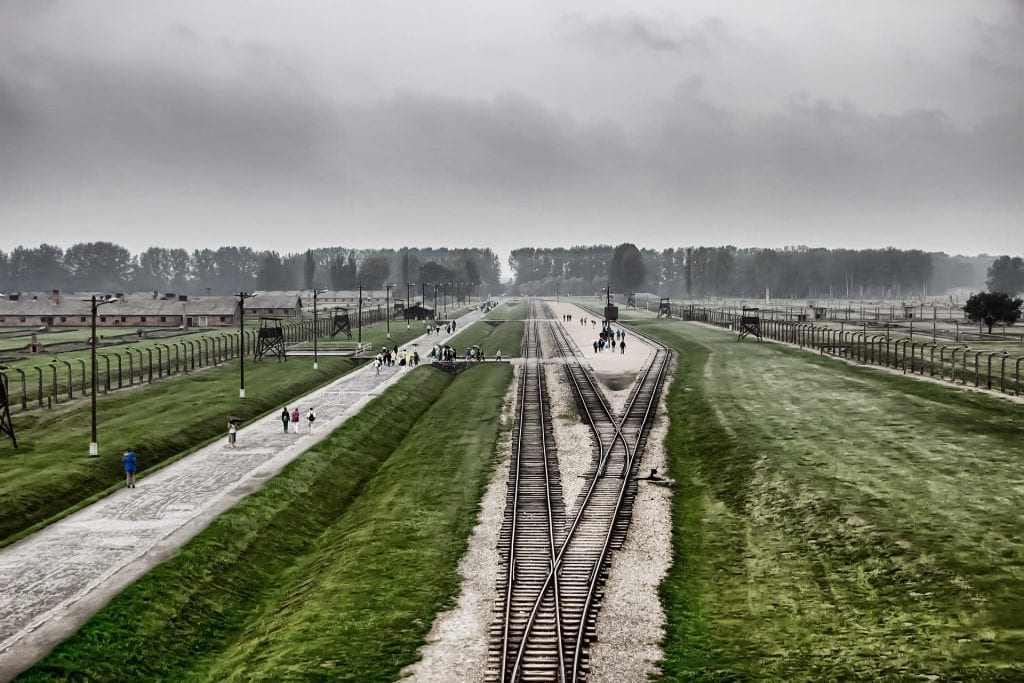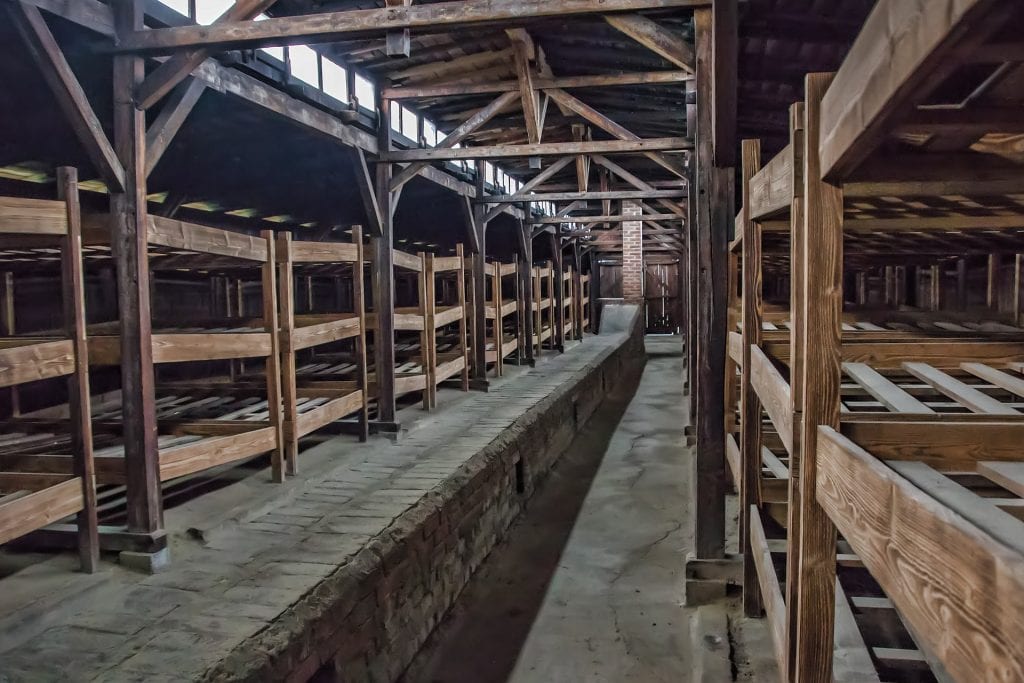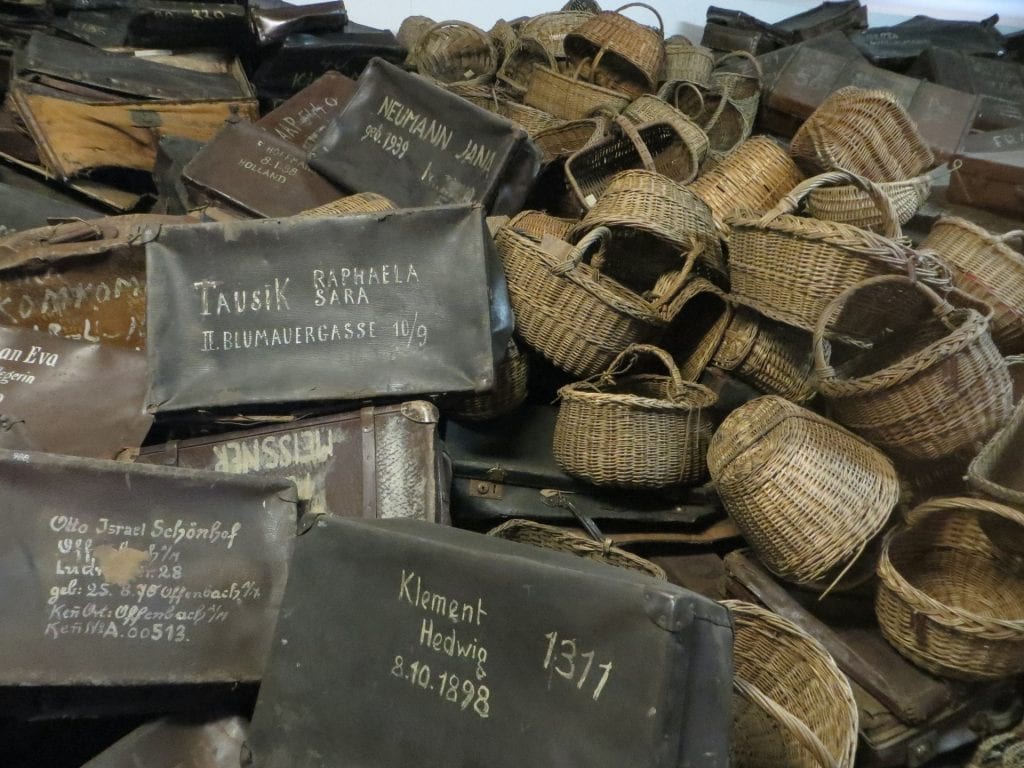Auschwitz
Dental treatment in Krakow
If you are considering dental treatment in Krakow, you may wish to visit Auschwitz between treatments. It is widely agreed that everyone should visit Auschwitz at least once in their lives, it is a stern reminder of the horrors that human beings can inflict on each other and for some people, a life-changing experience.
We have provided information about Auschwitz below, however if you would like to read a more detailed account of the history of Auschwitz Birkenau, please read the article on your partner website – Auschwitz Birkenau.
What was Auschwitz?
Auschwitz was a network of concentration and extermination camps built and operated in occupied Poland by Nazi Germany during the Second World War. It was the largest of the German concentration camps, consisting of Auschwitz I (the Stammlager or main camp); Auschwitz II-Birkenau (the Vernichtungslager or extermination camp); Auschwitz III-Monowitz, also known as Buna-Monowitz (a labour camp); and 45 satellite camps.
Oświęcim
Auschwitz is the German name for Oświęcim, the town the camps were located in and around; it was renamed by the Germans after they invaded Poland in September 1939. Birkenau, the German translation of Brzezinka (birch tree), refers to a small Polish village nearby that was mostly destroyed by the Germans to make way for the camp.
The Final Solution
Auschwitz II-Birkenau was designated by Heinrich Himmler, who was the Reichsführer and Germany’s Minister of the Interior, as the focus of the “final solution of the Jewish question in Europe”.

Rudolf Höss
From spring 1942 until the fall of 1944, transport trains delivered Jews to the camp’s gas chambers from all over Nazi-occupied Europe. The camp’s first commandant, Rudolf Höss, testified after the war at the Nuremberg Trials that up to three million people had died there (2.5 million exterminated, and 500,000 from disease and starvation), a figure since revised to 1.1 million, around 90 percent of them Jews.
Others deported to Auschwitz included 150,000 Poles, 23,000 Roma and Sinti, 15,000 Soviet prisoners of war, and tens of thousands of people of diverse nationalities. Those not killed in the gas chambers died of starvation, forced labour, lack of disease control, individual executions, and medical experiments.
Liberation of Auschwitz
On January 27, 1945, Auschwitz was liberated by Soviet troops, a day commemorated around the world as International Holocaust Remembrance Day. In 1947, Poland founded a museum on the site of Auschwitz I and II, which by 1994 had seen 22 million visitors (700,000 annually) pass through the iron gates crowned with the infamous motto, Arbeit macht frei (“work makes you free”).
Selections
By July 1942, the SS were conducting the infamous “selections,” in which incoming Jews were divided into those deemed able to work, who were sent to the right and admitted into the camp, and those who were sent to the left and immediately gassed.

Daily convoys
Prisoners were transported from all over German-occupied Europe by rail, arriving in daily convoys. The group selected to die, about three-quarters of the total, included almost all children, women with children, all the elderly, and all those who appeared on brief and superficial inspection by an SS doctor not to be completely fit. Auschwitz II-Birkenau claimed more victims than any other German extermination camp, despite coming into use after all the others.
SS officers told the victims they were to take a shower and undergo delousing. The victims would undress in an outer chamber and walk into the gas chamber, which was disguised as a shower facility, complete with dummy shower heads. After the doors were shut, SS men would dump in the cyanide pellets via holes in the roof or windows on the side. In Auschwitz II-Birkenau, more than 20,000 people could be gassed and cremated each day.

Canada
Sonderkommandos removed gold teeth from the corpses of gas chamber victims; the gold was melted down and collected by the SS. The belongings of the arrivals were seized by the SS and sorted in an area of the camp called “Canada,” so-called because Canada was seen as a land of plenty. Many of the SS at the camp enriched themselves by pilfering the confiscated property.
The last selection took place on October 30, 1944. The next month, Heinrich Himmler ordered the crematoria destroyed before the Red Army reached the camp. The gas chambers of Birkenau were blown up by the SS in January 1945 in an attempt to hide the German crimes from the advancing Soviet troops. The SS command sent orders on January 17, 1945, calling for the execution of all prisoners remaining in the camp, but in the chaos of the Nazi retreat the order was never carried out. On January 17, 1945, Nazi personnel started to evacuate the facility.
Nearly 60,000 prisoners were forced on a death march toward a camp in Wodzisław Śląski (German: Loslau). Those too weak or sick to walk were left behind. These remaining 7,500 prisoners were liberated by the 322nd Rifle Division of the Red Army on January 27, 1945.

Bergen-Belsen
Approximately 20,000 Auschwitz prisoners made it to Bergen-Belsen concentration camp in Germany, where they were liberated by the British in April 1945. Among the artefacts of automated murder found by the Russians were 348,820 men’s suits and 836,255 women’s garments.
Auschwitz Today
Today, at Birkenau the entrance building and some of the southern brick-built barracks survive; but of the almost 300 wooden barracks, only 19 remain: 18 near the entrance building and one, on its own, farther away. All that survives of the others are chimneys, remnants of a largely ineffective means of heating. Many of these wooden buildings were constructed from prefabricated sections made by a company that intended them to be used as stables; inside, numerous metal rings for the tethering of horses can still be seen.
The Polish government decided to restore Auschwitz I and turn it into a museum honouring the victims of Nazism; Auschwitz II, where buildings (many of which were prefabricated wood structures) were prone to decay, was preserved but not restored. Today, the Auschwitz I museum site combines elements from several periods into a single complex: for example, the gas chamber at Auschwitz I (which had been converted into an air-raid shelter for the SS) was restored and the fence was moved (because of building work being done after the war but before the museum was established). However, in most cases the departure from the historical truth is minor and is clearly labelled.
The museum contains many men’s, women’s and children’s shoes taken from their victims; also, suitcases, which the deportees were encouraged to bring with them, and many household utensils. One display case, some 30 metres (98 ft) long, is wholly filled with human hair which the Nazis gathered from people before they were sent to labour or before and after they were killed.
Auschwitz II and the remains of the gas chambers there are open to the public. The camp is on the list of UNESCO World Heritage Sites. The ashes of the victims were scattered between the huts, and the entire area is regarded as a grave site. Most of the buildings of Auschwitz I are still standing. The public entrance area is outside the perimeter fence in what was the camp admission building, where new prisoners were registered and given their uniforms. At the far end of Birkenau are memorial plaques in many languages, including Romani.
The Dentist of Auschwitz
Benjamin Jacobs was a dentist who in 1941, was deported from his Polish village and remained a Nazi prisoner until the final days of the Second World War. He survived Auschwitz and the death march to the Baltic, with the help of his dental tools.
On the advice of his mother, he carried his dental tools and despite being limited as to which procedures he could perform, he became known as “the dentist” and was sought after for his treatments. He performed simple dental procedures including draining a fistula and cleaning gums with iodine. His bright red box, containing his dental tools, became “his passport to survival”.
Once at Auschwitz with his father and brother, he was appointed to the dental station to treat SS men and was also given the job of extracting gold from prison corpses. It was hard to do, and he recounted “I heard the voices of broken hearts and crushed souls”. He also witnessed the selection processes and labouring in the mines. Despite saving extra rations for his family, his father died. At Auschwitz, he also crossed paths with Adolf Eichmann.
Jacobs wrote his memoirs which were published by the University Press of Kentucky in 1995. The Dentist of Auschwitz: A Memoir recounts his experiences and revulsion at having to strip gold from prisoners at Auschwitz in exchange for extra provisions for his family.
For further information about World War II sites in Poland, please visit our travel partner, the Poland Travel Agency.
Auschwitz tours & experiences